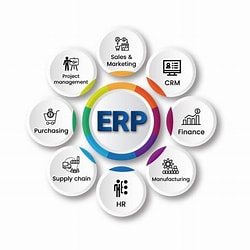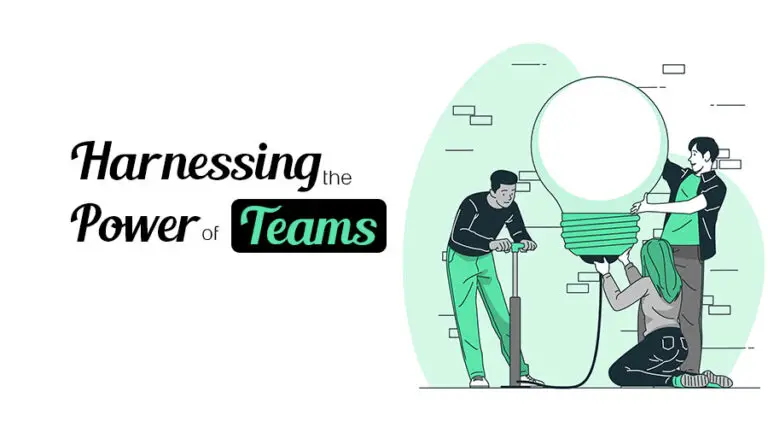Operational Stacks I: Mastering the Ultimate Tech Stack for Explosive Business Growth
Table of Contents
What is an Operational Stack?

An operational stack, often referred to as a technology stack, comprises the collection of technologies and tools that an organization uses to build, deploy, manage, and operate its applications and IT infrastructure.
This stack includes everything from the hardware and networking components to the software frameworks and applications that enable business processes. The goal of an operational stack is to provide a robust and scalable foundation for delivering IT services effectively and efficiently.
Key features & Importance of Operational stacks
Choosing the right tech stack greatly impacts the way your business will potentially run; from internally generated projects, to collaborative external projects; the operational stack you choose will determine the speed and efficiency with which those projects will run.
The following are key features which will convey value to your operational stack:
Reliability and Uptime:
A well-designed operational stack ensures high availability and reliability of applications and services, minimizing downtime and ensuring consistent performance.
Scalability:
An efficient operational stack allows systems to scale seamlessly in response to increased demand, accommodating growth without sacrificing performance.
Security:
A good operational stack includes integrated security measures, protecting against vulnerabilities, breaches, and cyberattacks, thereby safeguarding critical data and operations.
Cost Efficiency:
By optimizing resource utilization and automating routine tasks, a good operational stack reduces operational costs and maximizes return on investment.
Compliance and Governance:
Ensuring that the operational stack complies with industry standards and regulations helps in maintaining governance and avoiding legal and financial penalties.
Essentially, an effective operational stack serves as the foundation for scalable, secure, and efficient IT infrastructure, allowing businesses to achieve their strategic objectives and provide their clients with top-notch services.
It is quite risky to change your tech stack mid-project so it is important to get it right from the start.
Types of Operational tech Stacks

Operational stacks can be categorized into several types based on their functionalities (e.g. majorly tech stacks like node js, Django, operating systems, My SQL, etc) and based on the tools used per department. Here we will focus on the latter.
The various tools used by departments will include: Sales tools, Finance tools, Communication tools, Marketing tools, Customer relations tools, Human resources tools, and Advertisement tools.
Sales tools
Your sales tool is the basis on which the sales team will efficiently do their job. This invariably means using sales technologies to enable prospecting, pitching to investors, as well as effectively securing & closing deals. Examples of these include:
- Sales enablement tools e.g Salesforce, Membrain, whatfix, etc
- CRM applications e.g Hubspot, Salesflare, Zoho, etc

- Call tracking software e.g CallTrackerFX, FluentStream, Invoca, etc.
Communication tools
These facilitate efficient collaborations and streamlined workflows within and between departments. Some of these tools include:
- Video Recording tools e.g Zoom, OBS Studio, Loom, etc.
- Meeting scheduling software e.g Calendly, Doodle, Zoho bookings, etc.
- Internal messaging and chat platforms e.g Slack, Microsoft teams, google chat, etc
- Email: Zoho mail, Gmail, Outlook, etc
Finance tools
In operational stacks, the combination of software & tools used by businesses to streamline their operations often include finance tools. These are comprised of:
- Accounting software
- Invoicing & quotation software
- Payments & billing
- Enterprise Resource Planning (ERP) Systems

Examples are: Quickbooks, Zoho Invoice, Flutter wave, Paystack, SAP ERP, etc.
Marketing tools
Tech stacks for marketing must enable the team to draw in, grow, and retain customers. This may consist of:
- SEO tools
- Analytics tools
- Email automation and tracking software
- Lead generation tools
- Social media management tools
These marketing technologies can include MailChimp, Ahrefs, Userlist, Hootsuite, SEMrush, and Streak.

Tools for social media insight are among the tech stack examples used in marketing.
Your team can refine its content strategy with the aid of SEO technologies.
Tools for Customer Success
The experience that your customers have with you is crucial to any successful business. A corporation can be destroyed by poor customer service. A tech stack that enables your support personnel to promptly and effectively handle client issues is essential. The following service tech stacks are categorized:
- Ticket management software
- Live chat software

- Help desk software
- Call center software
- Survey software
HubSpot’s ticketing platform, Watched Elements, SurveyMonkey, and Intercom are a few technologies that the support team may use.
Tools for Human Resources
The best applicants should be easy for your team to locate, assess, hire, and manage thanks to your HR tech stack. Consider the following tool categories:

- Payroll software
- Candidate assessment software
- Performance appraisal software
- Applicant Tracking tools
These technologies include, among others, CodeSubmit, Gusto, Workday, ADP, Lever, and Greenhouse.
Advertising tools
Even though your marketing stack could include your ad tech stack, it’s also likely that you have a completely different collection of technologies. In any case, the following categories of tools are essential for your advertising team:
- Search engine marketing tools
- Asset creation tools (for designing graphics and videos)
- Social ad management platforms
- Programmatic advertising software

A few technologies to incorporate within your ad tech stack are Google Ads, Outbrain, Hubspot, Amazon ads and AdRoll.
How to choose the right Operational stack for your business
As mentioned earlier. Selecting the right operational stack is extremely crucial for any business aiming to maintain efficiency, scalability and competitiveness in today’s fast paced digital landscape.
Here is a step-by-step guide to help you set up or choose an operational stack tailored to your business needs.
Define your goals and objectives:
Clearly outline what you want out of the stack. Are you looking to enhance performance, improve security or streamline operations? Some technologies are best at providing in-depth business insights for analytics, some are best at data management while others are best at providing information regarding consumer behaviour.
Assess your business requirements:
Start by thoroughly understanding your specific business needs. Identify which department needs it in order of priority i.e. sales, marketing, etc. as well as core functions your stack must support i.e. application hosting, data storage, customer interactions and public interactions. Consider factors like expected traffic, transaction volumes and compliance (with the set laws for that industry) requirements.
Educate employees in various departments who will use the tool:
As it happens, your company’s engineering and culture can be inferred a lot from its tech stack. Because of this, some of the greatest tech stacks provide tools that their staff members will undoubtedly find familiar.
Selecting technologies that aid in answering business-related queries is essential, but they must be instruments that nearly everyone can use with ease. Consult with your teams to determine the best tools, and solicit their opinions. To what extent do they feel comfortable with complexity? Which tools have they previously used successfully?
Identify the project and its scope:
Your team’s project type will have a big influence on the technology you select. A web development project will require different tools than one using a mobile app.
Customize your technology stack for every project you work on, and choose the resources that will enable your team to produce the greatest end product.
Plan for scalability:
Ensure your operational stack can scale with your business. Take your projects size into account and opt for scalable infrastructure and components that can handle increased load without compromising performance.
Prioritize privacy & security:
Security is a very important component of any operational stack and it should be prioritized in yours especially in industries where sensitive user information may be shared e.g a telemedical, biotechnology or fintech company. Implement security measures such as; firewalls, encryption and regular patching. Also, endure compliance with industry standards and regulations to protect sensitive data.
Decide on a budget:
Certain tools are more expensive than others. Consider the costs of the different tools in your tech stack, select the subscription type you want, and decide the tier you want.
Seek expert advice:
Consult with IT professionals or solution architects to validate your choices and ensure your stack aligns with the best practices and future growth plans of that industry.
Test and optimize:
Before finally deploying your stack. Conduct thorough testing to identify and resolve potential issues. Continuously monitor and optimize the stack to maintain peak performance.
Good luck building your stack!







